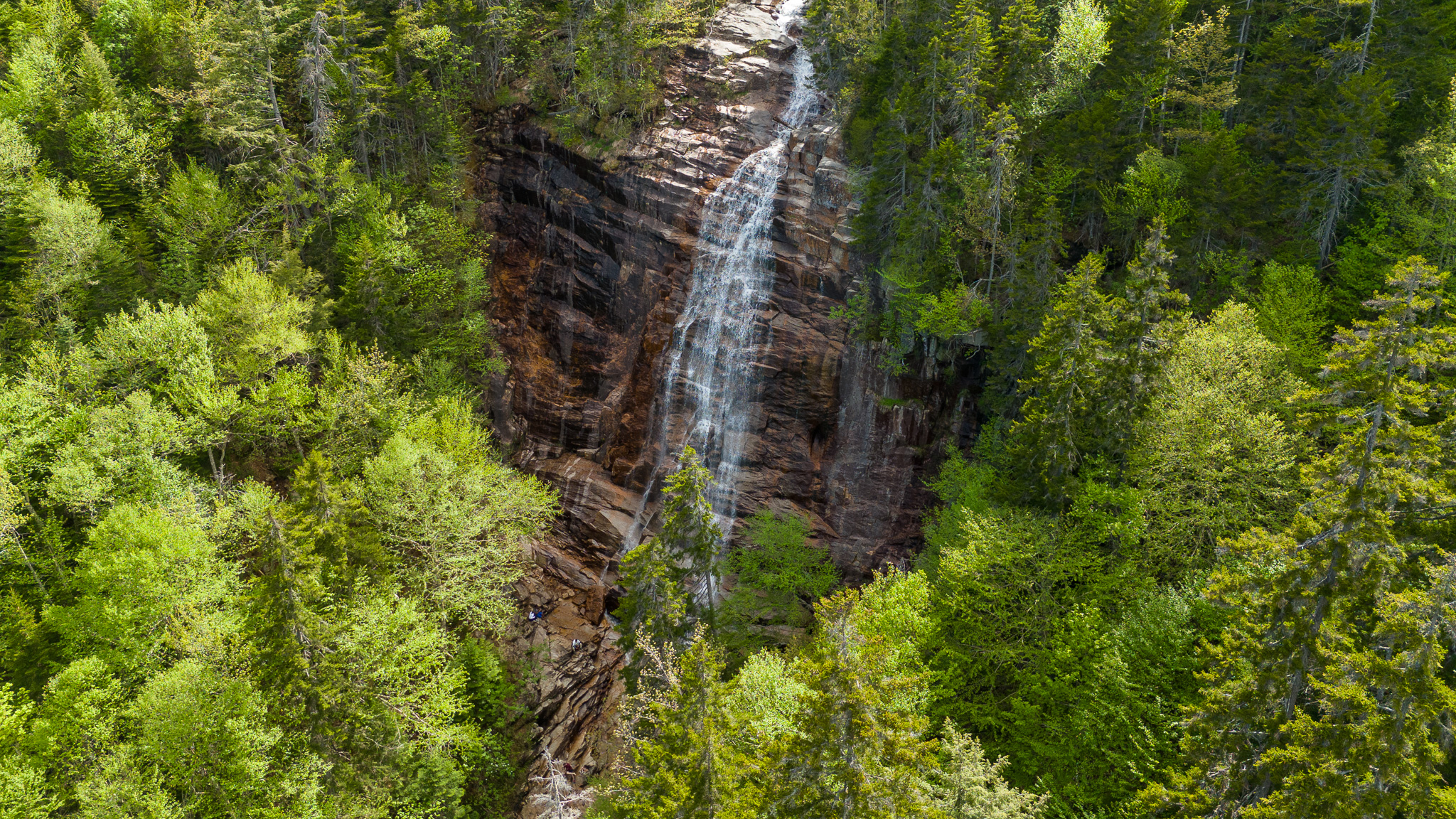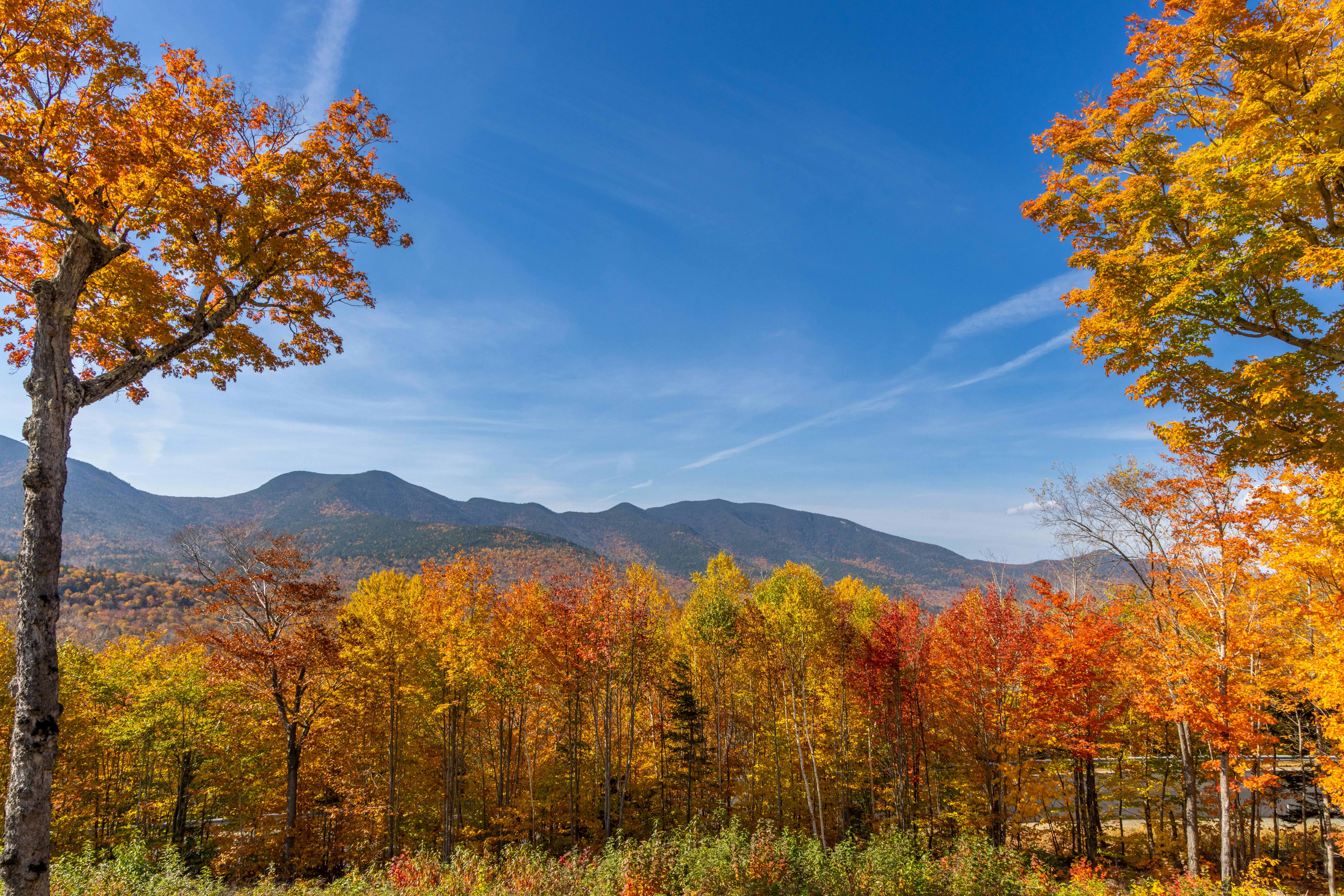New Hampshire Hiking in the White Mountains: 5 Most Popular Trails

New Hampshire Hiking in the White Mountains: 5 Most Popular Trails
As we charge into spring with renewed enthusiasm, it’s time to put New Hampshire on the list of ‘must-visits’, and the star of the show is the majestic White Mountains.
There, the endless trails are suited for all levels, and the gorgeous views of the still-snowy peaks are legendary all over the nation.
Whether you’re looking for a leisurely stroll to a breathtaking waterfall or feeling more up for a towering summit, there will be something for you. In this blog post, we’ll cover the five most popular trails in our Granite State, as well as give you a quick list of things to prepare for.
- Arethusa Falls
- Welch-Dickey Loop
- Mount Washington via Tuckerman Ravine Trail
- Mount Willard
- Franconia Ridge Loop (with optional Mount LaFayette Summit)
5 Most Popular Trails in the White Mountains
Without further ado, here are the five most popular trails in the White Mountains. Keep in mind this is about the most POPULAR trails, which means you are likely to have plenty of company during your hike. Whether this is a good or bad thing is entirely up to you!
1. Arethusa Falls

Let’s start easy, shall we?
Arethusa Falls is New Hampshire’s tallest single-drop waterfall and, many would say, the most scenic in all of New England. This iconic landmark is enjoyed by almost all visitors to the White Mountains, so be prepared to face throngs of people, especially during weekends.
The trail is an easy 3.1 miles out-and-back, which, to the avid hiker, might not seem much. However, this IS, after all, a trail in the White Mountains, and to the average tourist, the 850 feet elevation gain, rocky terrain, and haphazardly-spaced tree roots that are characteristic of the region might be seen as challenging.
This family-friendly hike should take about 1.5 to 3 hours, depending on many other variables, such as individual fitness and trail conditions. To get to the trailhead, get to Arethusa Falls Road and aim for Harts Location. There are two parking areas, and the lower parking serves as an overflow. The trail begins at the upper parking area.
The trailhead is well-marked, and you can’t miss it. Keep in mind that at 0.1 miles into the hike, the Bemis Brook Trail forks left. You can take this trail to bypass the crowds, and this alternative takes you through several waterfalls and a pool. It climbs steeply at the end and joins the main Arethusa Falls trail shortly.
Distance: 3.1 miles
Elevation Gain: 850 feet
Approximate Time: 1.5 to 3 hours
2. Welch-Dickey Loop
.jpeg)
Stepping it up a notch, the Welch-Dickey Loop is another popular trail, partly due to its relatively easy grading and sweeping vista views. Optimistically labeled ‘family friendly’ by White Mountains standards, that is, it is a relatively short hike that gets steep at times, with some scrambling involved.
The trail begins with a gentle ascent through lush forests before reaching the summit of Welch Mountain. There, you’ll follow a ridgeline to Dickey Mountain, all while enjoying panoramic views of the region around Sandwich Range.
Being a loop, you can do it from either direction, but counterclockwise is recommended as the descent is gentler. Although easy, the rock slabs can be slippery, especially if wet, so good shoes are strongly recommended. In addition, ridgelines are exposed, so the wind can be overwhelming.
To get to the trailhead, get yourself to Upper Mad River Road, then turn right onto Morris Road, following some clear signages. The parking area is a short distance from where the road turns to gravel.
Distance: 4.4 miles
Elevation Gain: 1,650 feet
Approximate Time: 2 to 4 hours
3. Mount Willard

Mount Willard might be small, but it sure is mighty. Although dominated by the massive peaks surrounding it, the Mount Willard Trail is prized for its gorgeous views that are easily accessible to the intermediate hiker.
This trail lies along the Appalachian Trail within Crawford Notch State Park and goes to the ledges of the cliffs overlooking it. The trailhead is near AMC Highland Center and follows an old road through the serene forest. The incline is gentle but steady, passing scenic streams and rock formations.
After about a mile and a half, you’ll reach the open summit ledge of Mount Willard, where you’ll be rewarded with a stunning view of Crawford Notch, towering cliffs, and lush valleys.
This trail is a relatively steep hike that might not faze intermediate or advanced hikers, but for the regular Joe, it might be deemed fairly strenuous.
Distance: 3.2 miles
Elevation Gain: 900 feet
Approximate Time: 2 to 4 hours
4. Mount Washington via Tuckerman Ravine Trail

With the Mount Washington via Tuckerman Ravine Trail, we’re getting a little more serious. This 8.2-mile roundtrip trail climbs over 4,000 feet and includes the highest peak in the White Mountains: Mount Washington.
The trail starts at Pinkham Notch Visitor Center and climbs moderately through the forest before reaching Hermit Lake Shelter, a popular stop with views of the Tuckerman Ravine headwall.
Then, the trail steepens, often requiring some scrambling before reaching the start of the summit push. Be careful when ascending the headwall, as there are loose rocks that you can kick down to hikers below.
Towards the summit, you’re potentially facing strong winds and unpredictable weather conditions, so proceed with caution. You might also have to deal with wet, slippery rocks, so be sure to stay on the trail.
This isn’t a trail for the faint-hearted. Mount Washington is notorious for unpredictable weather that can turn bad in a flash, so be mindful and don’t attempt this trail in snowy conditions.
Distance: 8.2 miles
Elevation Gain: 4,000 feet
Approximate Time: 5 to 9 hours
5. Franconia Ridge Loop with Mount Lafayette

Here’s another serious trail for the avid hikers. With jaw-dropping, 360-degree views of the White Mountains, this is a challenging but oh-so-rewarding day-long adventure.
You’ll start at the Lafayette Place Campground in Franconia Notch State Park, taking the Falling Waters Trail at the beginning and crossing three scenic waterfalls before summiting Little Haystack Mountain.
From there, you’ll get on the Franconia Ridge Trail, which goes above the treeline, giving you stunning 360-degree views of the White Mountains. The trail then continues over Mount Lincoln and Mount Lafayette before descending along the Greenleaf and Old Bridle Path trails.
Again, this isn’t a hike for novices, and the summits often have unpredictable weather and constantly changing conditions. The views are absolutely stunning, which explains the throngs of people you’ll meet on the trail. Be prepared, it is a strenuous hike and you’ll need above-average fitness!
Distance: 9 miles
Elevation Gain: 3,900 feet
Approximate Time: 5 to 8 hours
Honorable Mention: Falling Waters Trail
We didn’t want to miss out on the Falling Waters Trail, a popular trail that is suitable for hikers of all ages and levels. If you wanted a little hike that doesn’t take the stuffing outta you, this one’s for you!
This pleasant hike will take about two hours, even if your fitness level is less than ideal. It crosses three scenic waterfalls with a slight elevation gain over some rocky terrain before ending up in Little Haystack Mountain. Even though you might get away with regular sneakers, trail shoes are recommended.
We have a full description of the trail here and also cover how it leads into the Franconia Ridge Loop.
Distance: 2.8 miles
Elevation Gain: 900 feet
Approximate Time: 1.5 to 2 hours
Stuff to Note
In case you are new to hiking or could use a reminder, here are some tips we like sharing with our guests in Gidana Getaways.
- Dress in layers. Spring and summer weather can change quickly and can go from sweltering to freezing in a heartbeat.
- Bring loads of water. Pack snacks if you think you need them.
- Check the forecast thoroughly before heading out. Many challenging trails have difficult weather conditions.
- Check with locals on trail conditions. Unless you absolutely know what you’re doing, we always advise against getting on trails that are still snow-covered.
- Start early if you’re planning a longish hike. As always, bring a headlamp and a backup.
- Let someone know where you’re going and what time you expect to be back.
- Be sure to have physical or offline maps. A compass wouldn’t hurt either.
- Wear proper footwear, especially on slippery, rocky, or challenging terrain. Climbing up Mount Washington or Mount Lafayette in tennis shoes will not only be a miserable experience, but it could also be dangerous.
- Prepare for emergencies on longer hikes with a first aid kit, GPS, supplies, and a way to get help.
Don’t forget the LEAVE NO TRACE principles of enjoying our gorgeous planet. Be safe out there, have fun, and happy hiking!
Subscribe to our newsletter
Lorem ipsum dolor sit amet, consectetur adipiscing elit. Suspendisse varius enim in eros elementum tristique.
Related posts
Check out our other blog posts!



